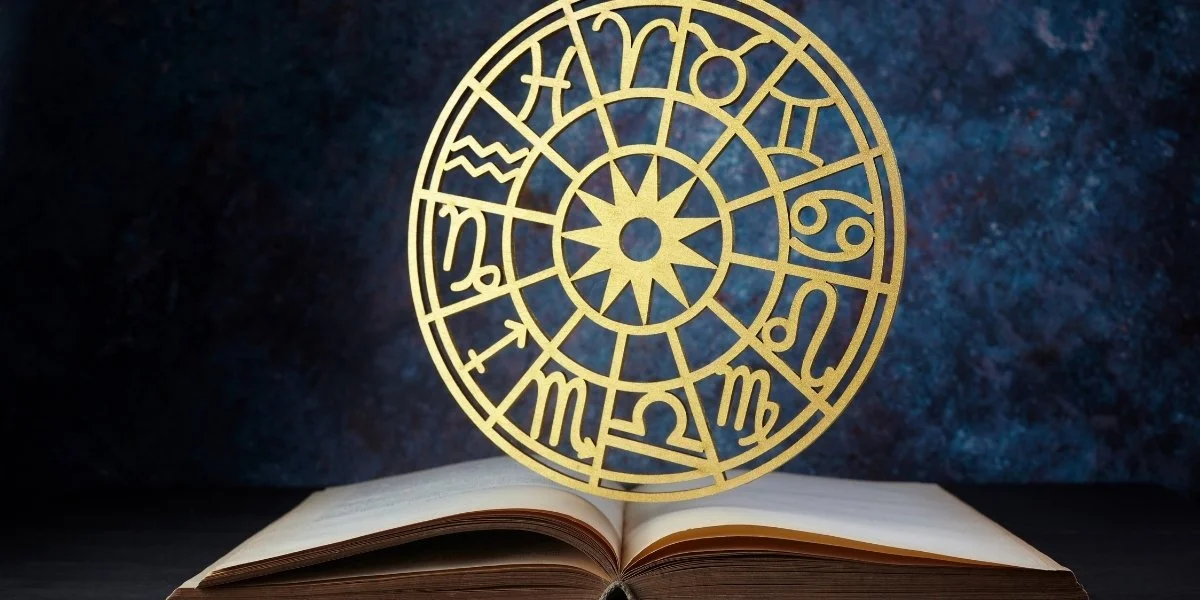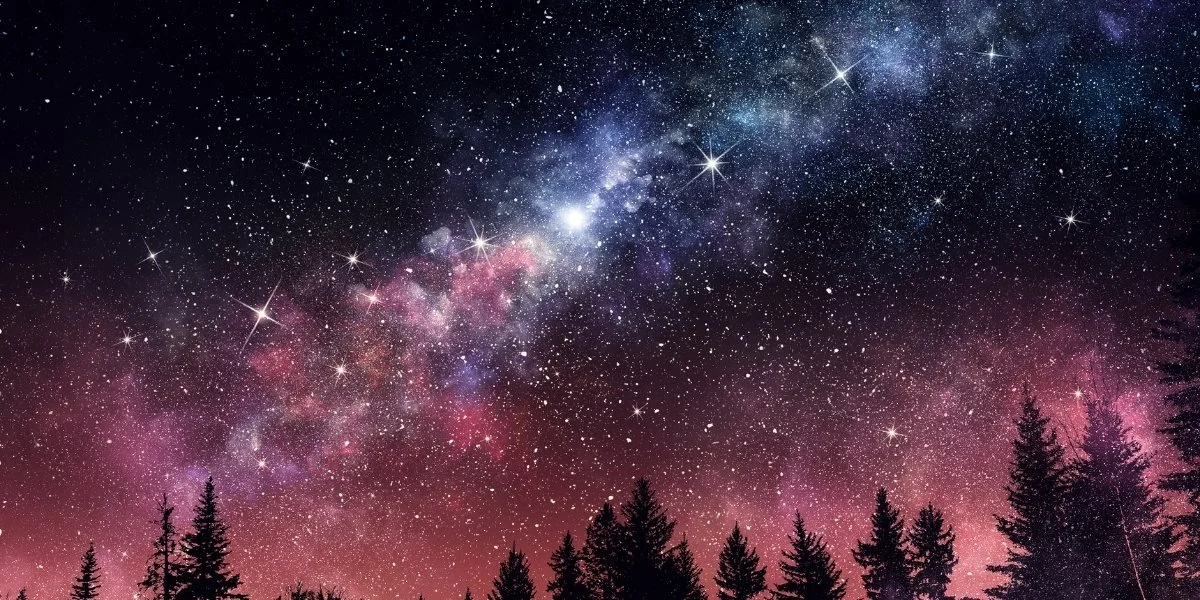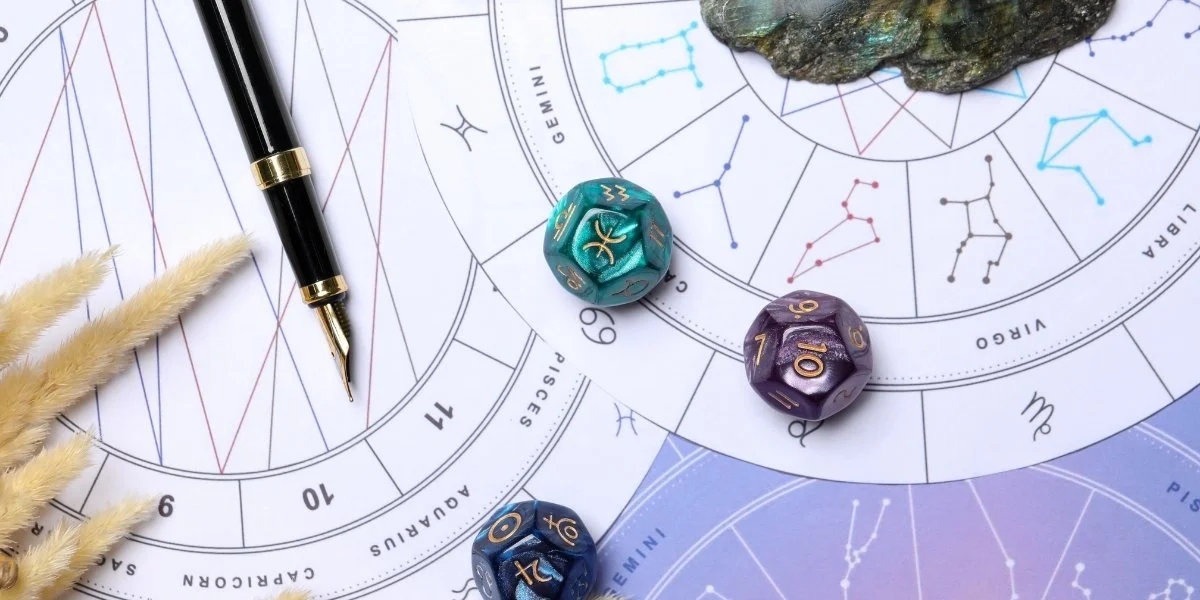Are there New Star Signs? No, But There’s Nuance
Is it true that your Sun Sign has changed?
No, it’s not true — but there’s more to the story.
Every few years, headlines go viral declaring that “your Sun Sign has changed,” that Astrology is “outdated,” or that Pluto’s planetary status somehow unravels your Birth Chart.
This month, US outlets and the Daily Mail revived the “changing Signs” story before wrapping up with a set of horoscope blurbs for each Zodiac Sign.
One of my own mentors, Adam Elenbaas of Nightlight Astrology, also touched on this story in a recent podcast.
And it begs the question: if Astrology is supposedly nonsense, why lean on it for clicks at the end of a misinformed article? Oh, the irony!
Let’s untangle what’s really being said and why your Birth Chart (and my Stars & Signs practice) are safe.
Where the story comes from
The claim usually points to precession, the slow wobble of Earth’s axis. Over thousands of years, this wobble makes the backdrop of stars appear to drift.
From there, some leap to: “Your Sun Sign must have changed!”
But that’s not how Astrology works.
Most Western Astrologers use the tropical Zodiac, a symbolic circle of twelve equal signs, beginning with Aries at the spring equinox. It’s tied to the rhythms of the Sun and seasons, not to the shifting outlines of star constellations.
Yes, the sky moves slowly. No, that does not suddenly undo thousands of years of Astrological practice. Your Birth Chart hasn’t shifted, and your Sun Sign hasn’t magically swapped overnight.
The Zodiac is symbolic, not stellar
Here’s the part most headlines leave out, the Zodiac isn’t a literal star map.
Picture the Sun’s annual path across the sky as seen from Earth, drawn as a perfect 360° wheel, then divided into twelve equal 30° slices. Those slices are the Zodiac Signs.
The names, Aries through Pisces, were inspired by constellations, but they don’t match them exactly. Constellations are irregular; sprawling Taurus takes up far more sky than tiny Aries. The Zodiac, by contrast, is evenly divided.
That’s why Aries season always begins with the spring equinox, no matter where the constellation Aries drifts.
Astrology works with symbolic markers tied to cycles of Sun, Moon, and seasons not the jagged borders of constellations.
Two traditions, one language of symbols
Astrologers don’t all use the same system. The two main ones are:
Sidereal Astrology: Aligns the Zodiac with constellations, shifting with precession.
Tropical Astrology: Anchors the Zodiac to the seasons, keeping Aries fixed at the equinox.
Neither is “wrong.” Both are symbolic frameworks shaped by culture and history.
Think of it like Tarot: whether you read with the Rider-Waite-Smith deck or a modern illustrated deck, the imagery differs but the archetypes remain.
Why the media loves the “Astrology is wrong” narrative
So why does this headline keep returning?
Headlines that reduce everything to “your Sun Sign is wrong” are attacking the easiest target — pop Astrology — rather than the broader craft missing the historical depth entirely.
And, articles that mock Astrology reliably provoke a strong reaction from people who practice or care about it. Those comments equal traffic which is why many outlets keep publishing these pieces. People share them, argue about them in comments, and Astrologers like me feel called to respond.
And that’s the hook of the article. It’s not carefully researched scholarship, it’s purely entertainment. Headlines that provoke outrage or self-doubt always guarantee clicks.
We respond because the articles are historically and conceptually sloppy, and because the pieces ignore what Astrology actually does — meaning-making and divinatory practice, not hard physical causality.
Beyond Sun Signs
Sun Sign horoscopes are fun, but they’re only a doorway.
The Sun represents ego and central themes, but your chart is a full symphony: Moon, Rising Sign, Planets, Houses, and aspects all weave together.
That’s why serious Astrology isn’t about predicting with physics-like precision. It’s about interpreting a language shaped by archetypes that helps us connect, reflect, and find patterns of meaning in our lives.
And humans naturally recognise patterns and symbolism. A feather might feel like a sign from a loved one. A heart-shaped cloud might bring comfort.
None of these carry scientific proof, but the meaning is real because it resonates with us.
Astrology offers the same kind of resonance, connecting us to cycles larger than ourselves.
This is part of what makes divination so deeply reassuring: it reminds us that meaning is not fragile or fixed. Symbols have a way of speaking across forms, carrying guidance that reaches beyond logic or simple testing.
The role of the Astrologer or Card diviner is to consult with this oracular language after years of training in its techniques, learning to trust both their relationship with intuition and the symbols that arise as relevant in the moment.
What emerges is not a formulaic answer, but a spiritual dialogue shaped by study, intuition, and the living language of symbols.
For the person asking the question, this offers more than information. It offers comfort, perspective, and the sense of being met exactly where they are.
Astrology is not a definitive science in the same way Astronomy is. It doesn’t claim to predict in the same way that physics does. Instead, Astrology for all its technical methods, maths, lines and numbers, actually belongs to the family of esoteric divinatory arts alongside Tarot, runes, the I Ching, and dream interpretation.
These days, I’ve come to refer to Astrology as a form of divination; a symbolic language that offers insight rather than a deterministic scientific map It’s oracular, interpretive, and subjective in important ways:
It helps people reflect, notice patterns, and find deeper meaning in life events.
It is not a mechanical forecasting machine. Timelines and outcomes are described as themes and windows of opportunity, not exact cause-and-effect scripts.
Like reading a dream, Astrology translates images and symbols into insight. Planets and Zodiac Signs act like archetypes. Patterns describe potentiality, not certainty.
Science, symbols, and meaning
Critics often say: “If Astrology were real, astrologers could always guess your Sun Sign.” But Astrology isn’t a lab test. It’s interpretive, contextual, and intuitive, closer to poetry than to physics.
Trying to measure Astrology with scientific instruments is like measuring a poem with a ruler.
You’ll miss the essence entirely.
Across cultures, wisdom traditions have treated reality itself as alive, speaking through signs and symbols. Astrology belongs in that lineage.
I’m not anti-science. Science is extraordinary at what it does, but it isn’t the only way humans find truth. Meaning also comes through myth, story, and symbol — things not reproducible in a laboratory, but deeply transformative in our lives.
Expecting them to behave like physics misunderstands both.
So, has your Sun Sign really changed?
No. The wobble of Earth’s axis doesn’t erase your chart or suddenly turn you into an intense Scorpio when you’ve always been a wisdom-seeking Sagittarius.
Astrology has never been about chasing drifting stars. It has always been about symbolism, cycles, and meaning-making. It offers guidance like myths or dreams: not hard proof, but resonance.
So the next time you see a headline declaring Astrology “wrong,” remember that it’s more likely written for traffic than for truth.
If you enjoy reading your horoscope then please keep reading them. If you’re curious, go deeper and explore your Moon, Rising Sign, and the full Birth Chart.
Most importantly, remember: Astrology is a language of meaning and symbols. An art as much as a craft. It doesn’t need to be proven in scientific tests to be real in your life. Like dream or myth, it resonates, guides, and reminds us that the cosmos is alive with meaning.
Want an Astrology Consultation to see what’s in the Stars for you? Get in touch.




